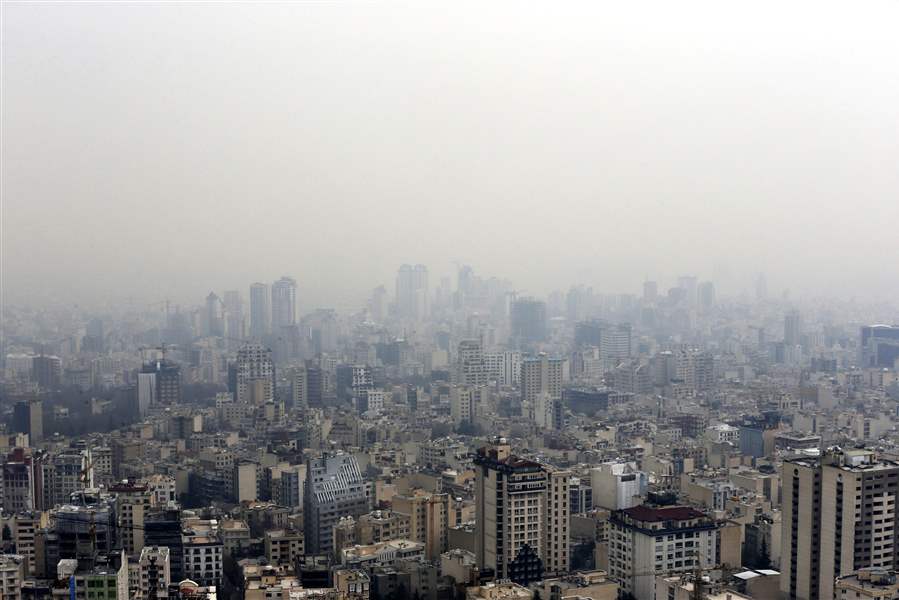Preschools and primary schools were closed in Tehran on Saturday, as the sprawling city experienced its second consecutive day of dangerously high pollutant levels.
For the second day in a row, Tehran’s air quality recorded an index of 152—more than three times the acceptable threshold of 50, based on World Health Organization standards.
“However, air quality is expected to improve on Sunday, as meteorologists expect strong winds and rainfall,” IRNA quoted Mohammad Rastegari, deputy for environmental monitoring at the Tehran Province’s office of the Department of Environment, as saying.
With 26,000 annual deaths due to air pollution, Iran ranks 16th in terms of air pollution-related deaths, according to figures released by the WHO in September.
DOE has declared that Iran’s struggle with air pollution costs its people around $30 billion a year, nearly double the $16 billion reported by WHO in 2014.
Every year with the drop in temperature in winter, a phenomenon known as temperature inversion occurs during which cold air underpins warm air at higher altitude, leading to the entrapment of air pollutants in the city, which causes heavy smog.
The parliament has only belatedly started reviewing the 35-article Clean Air Bill, after letting it gather dust for nearly two years. Unfortunately, progress remains slow.
The bill singles out inefficient vehicles, substandard fuels, industrial activities and dust storms as the major sources of air pollution in the country.
Drawn up by DOE in cooperation with other bodies, the bill proposes more frequent technical inspections of private vehicles. While the current law stipulates technical inspection of all vehicles once every five years, DOE is pushing for biennial checks.
The department insists that government vehicles should also be subjected to annual inspections.
The government has banned the production of highly-polluting, carburetor-equipped motorcycles from September and is urging people to opt for eco-friendly electric ones.
The administration has been distributing Euro-4 gasoline in major cities for months and has ordered automakers to make their products comply with the standard.
Experts say the three main sources of air pollution in Iran are motorcycle carburetors (a device that blends air and fuel in the engine), diesel cars without filters and gasoline gas guzzlers.
They say if 10% of the highly-polluting clunkers are removed from the streets, it will help reduce vehicular pollution by 48%.


